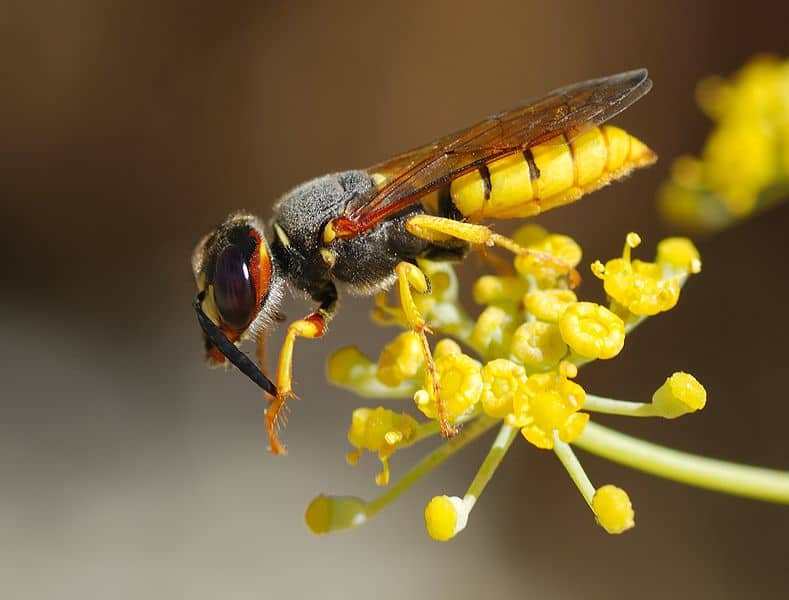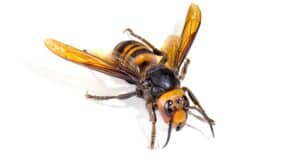Wasps will do anything to protect their vulnerable eggs. One species of wasp, the bee wolf, uses smell. Their eggs have an unpleasant chlorine odor to deter mold growth and predators. There are also parasitic wasps that lay eggs in well-fed caterpillars. When the eggs hatch, they eat the caterpillar from the inside out! What else should you know about these resilient insects?
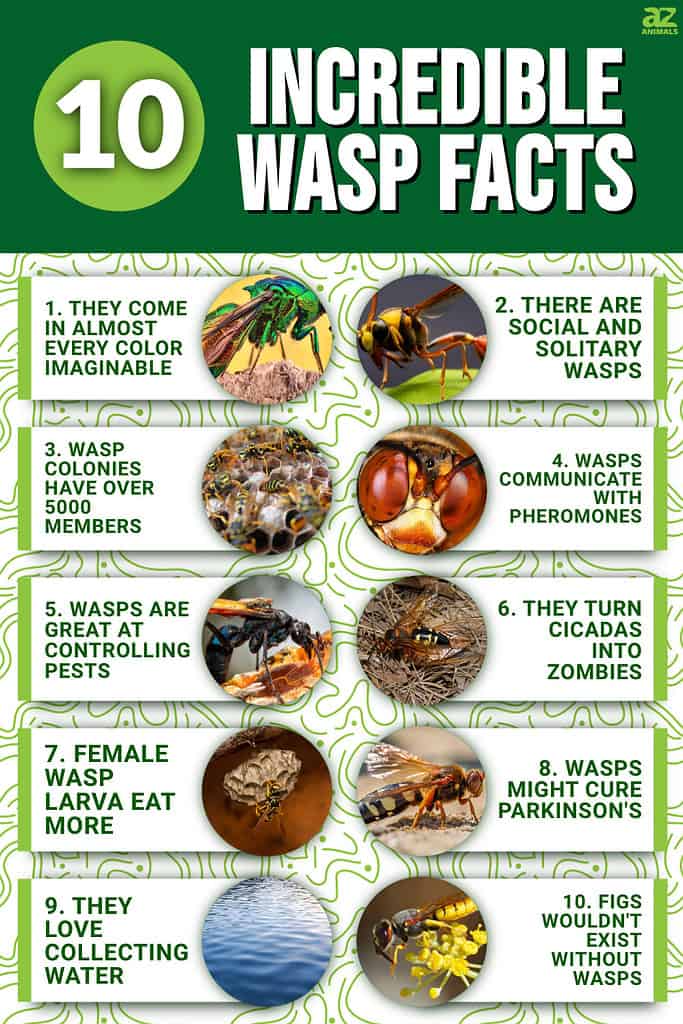
Read on to learn 10 incredible wasp facts.
1. They Come In Almost Every Color Imaginable
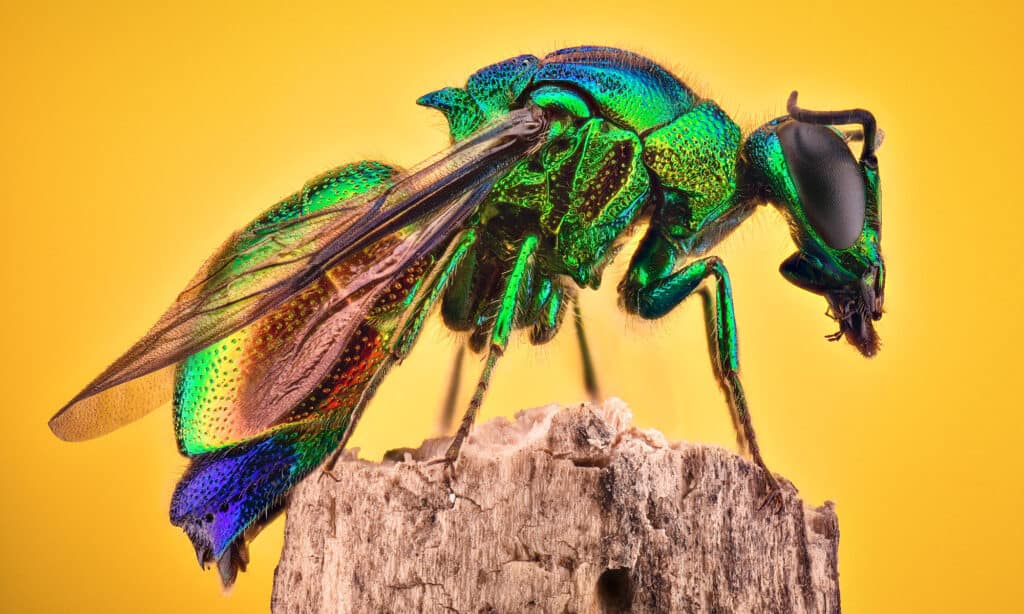
While many types of wasps are drab, there are other types that are quite vibrant!
©Cornel Constantin/Shutterstock.com
First, on our list of incredible wasp facts, let’s talk color combos! You might be familiar with the traditional yellow and black wasps. But did you know these buzzing insects have seemingly endless color combinations? There are metallic blue wasps, stark red ones, and other bright-colored species.
You can use the wasp’s color to help determine their species. For instance, mud dauber wasps are entirely black. Yellow jackets have a famous yellow body with black stripes. Red wasps are, you guessed it—red! Along with their unique color varieties, wasps also have easily distinguishable bodies. Unlike bees, their bodies have a more pointed lower abdomen that separates from the thorax.
2. There Are Social and Solitary Wasps
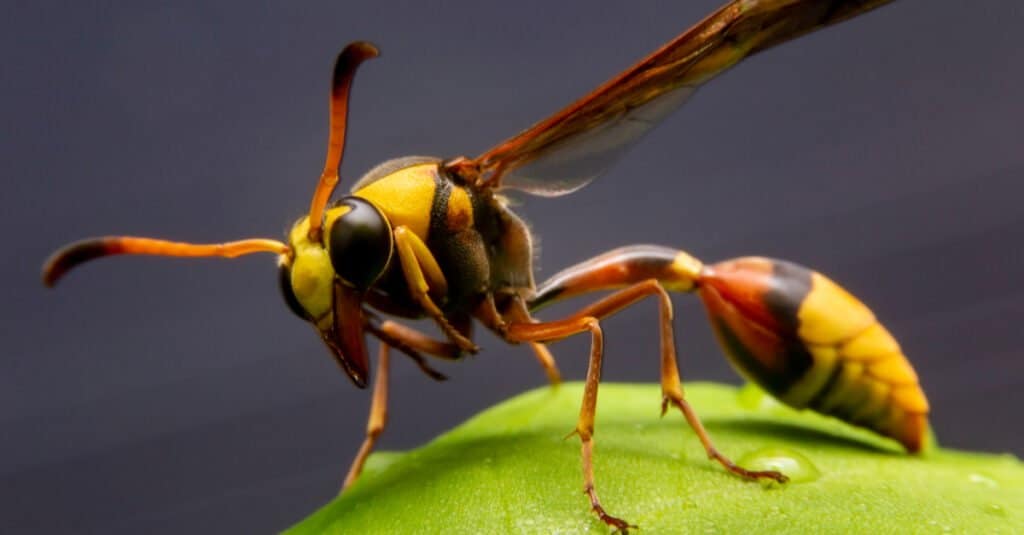
There are social and solitary wasps.
©Witsawat.S/Shutterstock.com
You can divide all of the wasps in the world into two primary subgroups: solitary and social. Solitary wasps are the most significant subgroup. This group includes some of the most giant wasps, and they don’t make colonies. Instead, solitary wasps use their venom for hunting some of the largest prey. For instance, it’s not unusual for a solitary wasp to make a meal out of a gigantic cicada.
On the other hand, social wasps only use their venom as a defense. Social wasps form colonies, and the workers spend time expanding the nest.
3. Wasp Colonies Have Over 5000 Members

Wasps colonies come with great numbers.
©Brian Fish – Public Domain
A wasp colony can get pretty crowded. By late summer, it’s not unusual for a colony to house over 5,000 wasps! However, things won’t stay crowded for long. Once the winter rolls around, all of the wasps will die, including the queen. The only queens who manage to live are the newly fertilized ones who can survive the winter cold. Social wasp colonies start over from scratch every single spring. The few queens who survive the cold months give birth to a new colony yearly.
4. Wasps Communicate With Pheromones

Wasps can message other wasps about threats and dangers through pheromones.
©Ryan Silva/Shutterstock.com
How do wasps know to attack as a group? It has to do with the way they communicate with pheromones. It’s just another one of the incredible wasp facts that make these insects so intriguing.
If one social wasp notices something threatening, it can send a distress signal using pheromones. The message lets the other members know it’s time to fight! They enter into a stinging frenzy. Other animals that use pheromones to communicate include ants, moths, and lobsters.
5. Wasps Are Great at Controlling Pests

Wasps help control agricultural pests.
©Sari ONeal/Shutterstock.com
You might think that wasps are pests, but the opposite is true. Wasps are incredibly beneficial to the ecosystem. They’re making the world a better place by helping control agricultural pests. Almost every pest insect in the world can become a tasty meal for the right wasp species. This even includes parasitic larvae. Wasps are incredible at controlling the pest populations that plague the agriculture industry. Now farmers are regularly deploying them to help protect their crops.
6. They Turn Cicadas Into Zombies
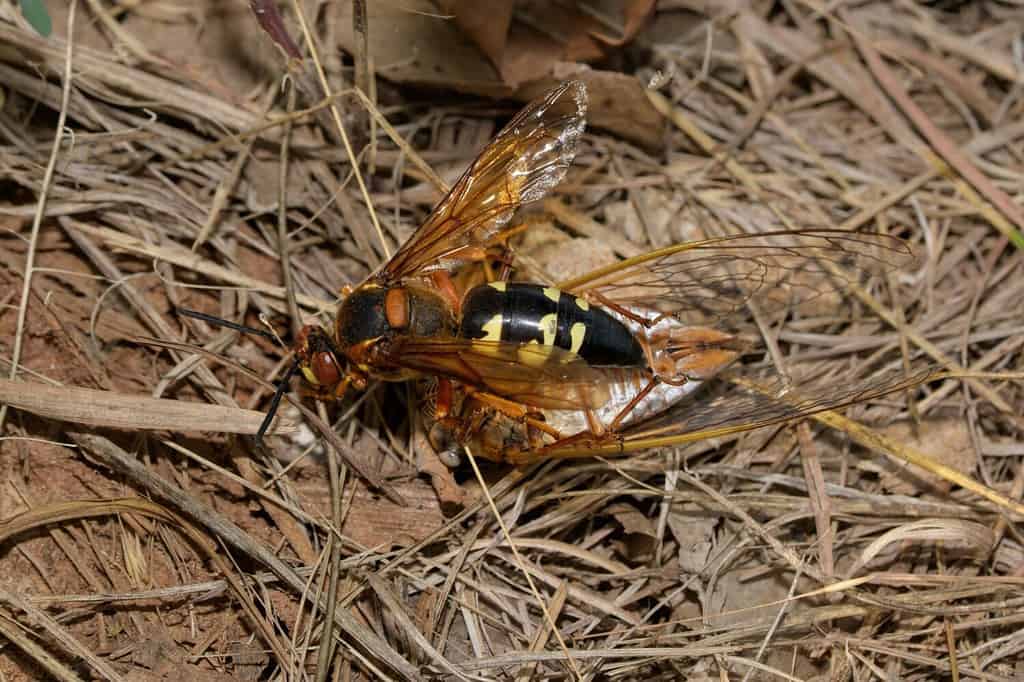
As creepy as it sounds, some wasps can keep cicadas alive longer to haul them back to the nest.
©Sari ONeal/Shutterstock.com
There’s a species of wasp called cicada killers. Cicada killers are big and scary-looking, but they don’t pose any sort of threat to humans. They do, however, know how to kill cicadas efficiently.
Female cicada killers will inject their prey with a cocktail of venom. The venom doesn’t instantly kill the prey but rather turns them into a type of zombie insect. The cicada becomes paralyzed and can live longer than it usually would. This gives the female wasp enough time to get her prey back to her nest. It’s an impressive feat considering that cicadas are so much larger than female wasps.
7. Female Wasp Larva Eat More
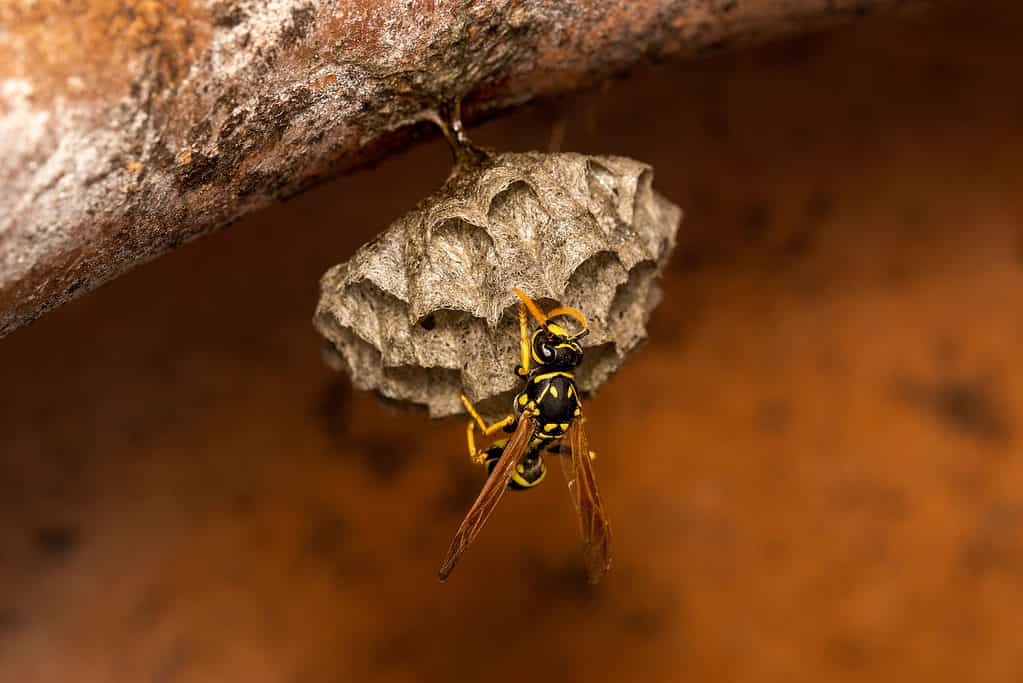
Baby female wasps require more food.
©iStock.com/Wirestock
Cicada killers use the insect they kill to feed their young. However, female larva need to eat more than the males. Once they have immobilize their prey in the nest, the female lays her eggs. When the wasp larva hatch, the single cicada will provide plenty of food for a male offspring. However, if it’s a female offspring then she’ll need two cicadas to feed on.
8. Wasps Might Cure Parkinson’s

Some wasp venom could possibly be used to cure Parkinson’s.
©samray/Shutterstock.com
Researchers are looking into ways to use the mind-altering molecules of wasp venom to aid in Parkinson’s research. One of the most promising species is the emerald cockroach wasp (Ampulex compress). The emerald cockroach wasp is a type of parasitic insect. It can sting its prey directly in their brain and impact their behaviors. The insects enter into a state called hypokinesia, giving them full control of their prey.
Researchers are looking for ways to use mind-controlling venom to help cure Parkinson’s disease. The neurogenerative disorder targets neurons that create dopamine, and brain cells slowly die. However, the peptides in wasp venom might be able to impact the dopamine pathways and reverse Parkinson’s symptoms. The venom could also help fight other neurodegenerative diseases like multiple sclerosis, Alzheimer’s, and amyotrophic lateral sclerosis.
9. They Love Collecting Water

Wasps will utilize water sources for many purposes.
©iStock.com/Raul Garcia Villalon
There are adorable videos all over the internet of wasps gathering water. They’re foraging insects, always looking for opportunities. Once they find a good water source, they’ll return day after day. Along with drinking, wasps love using water for all sorts of things. They’ll use the water to cool their nest, share with their larva, and build things. Mixing the water with wood pulp, wasps can build some of the most vital nest parts. They have to be careful, however! If a wasp gets its wings too wet, it won’t be able to fly.
10. Figs Wouldn’t Exist Without Wasps
Last on our list of incredible wasp facts; there wouldn’t be figs without them. There are around 750 different species of figs. But if wasps didn’t exist, there wouldn’t be any fig species at all! There’s a particular species of wasp called fig wasps. They’re responsible for pollinating all of the different fig species. The pollination process is incredible and involves mutualism. Other animals that use mutualism include badgers with coyotes, and mongooses with hornbills.
Mutualism happens when two living things interact and share a benefit. In this case, wasps get a place for eggs, and figs get a chance to pollinate. How does it work?
When female fig flowers are ready for pollination, they admit a unique aroma. The aroma attracts female fig wasps for that specific tree species. The female wasp’s discerning smell helps her find the perfect tree species. However, the work doesn’t stop there. Then the wasp has to work hard to bore inside the small opening at the very end of the fig. Finally, she can lay her eggs.
.
The photo featured at the top of this post is © Alvesgaspar / Creative Commons / Original
Thank you for reading! Have some feedback for us? Contact the AZ Animals editorial team.



